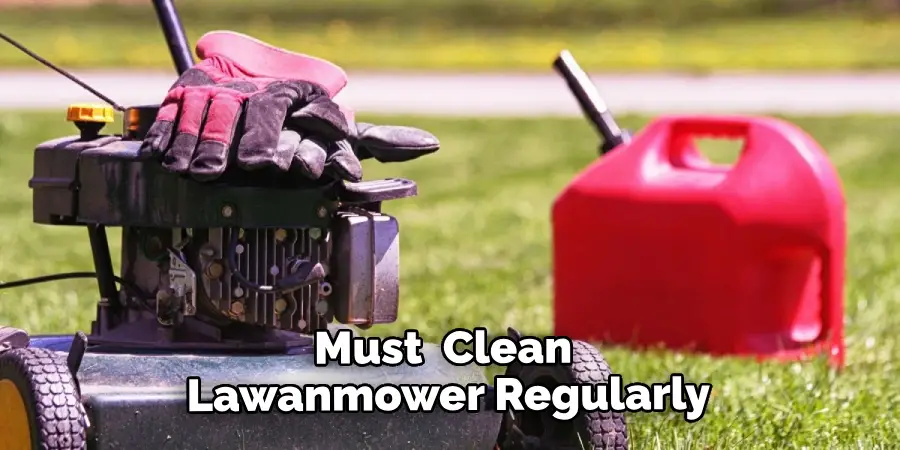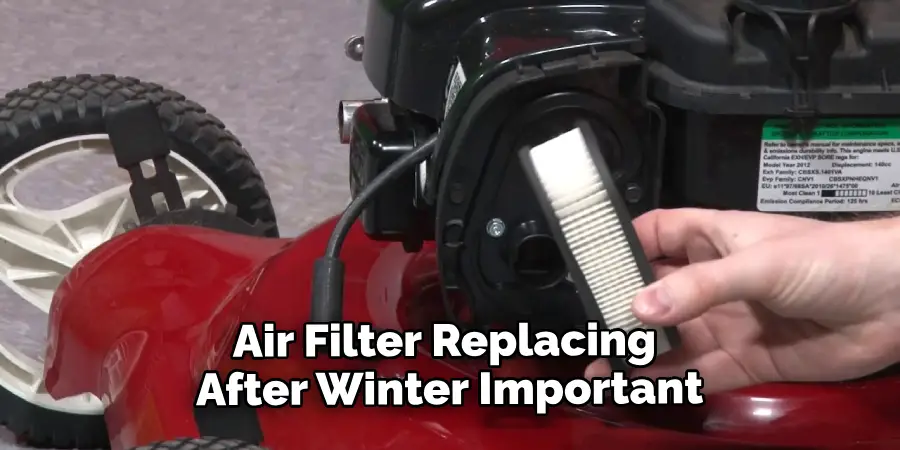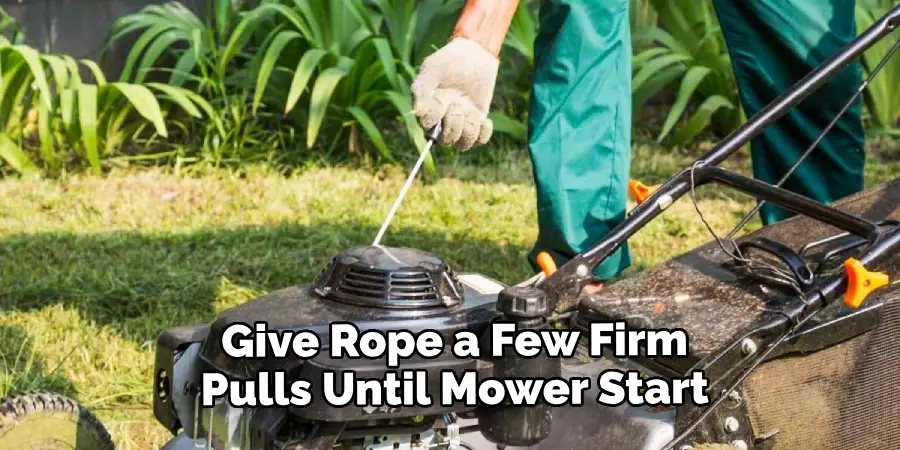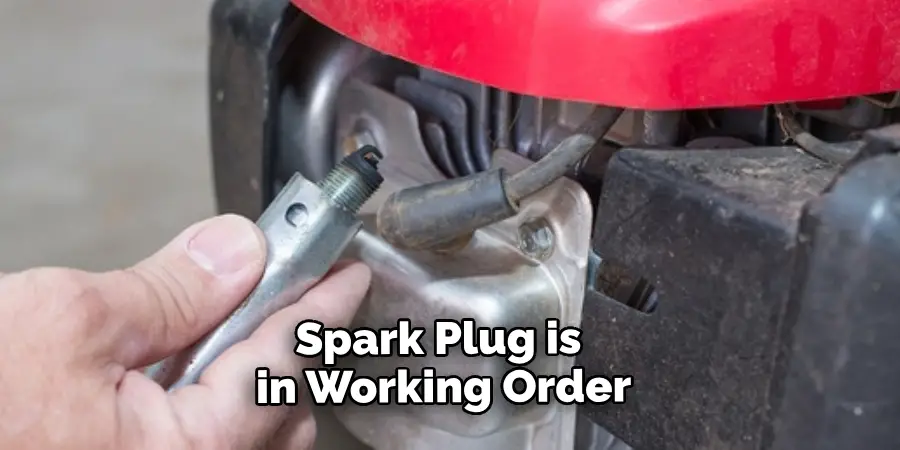Are you ready to get your lawnmower running again? After winter, it can be tricky getting your mower started up again. Follow these simple steps, and you’ll soon have a perfectly functioning lawnmower!
If you’re planning to get your lawn ready for the soon approaching summer, one of the first steps is usually getting your lawnmower started after winter. It can feel daunting sometimes, especially if this hasn’t been done in a while or has never been attempted.

However, how to start a lawn mower after winter doesn’t have to be a stressful task, and today we will show you all the necessary steps so you can get started mowing without any hassle! So don’t worry if you’re new to doing this – let’s dive into how to start a lawnmower after winter.
What Will You Need?
Before you can start up your mower, you should have the following equipment:
- Gasoline
- Electric starter or pull rope starter (depending on your engine type)
- A clean air filter, if applicable
- A wrench and screwdriver to open the fuel line
- A spark plug tester
- Clean cloths for wiping down the mower
- Oil
- Safety gear such as gloves and goggles
Once you have all the necessary items, you can begin!
10 Easy Steps on How to Start a Lawn Mower After Winter
Step 1: Cleaning Your Mower
In order to extend the life of your lawnmower, you must clean it regularly. This is especially true before starting up a mower after winter. Start by clearing away any debris from the engine compartment and wiping it down with a clean cloth.

Step 2: Check the Oil Level
Your mower’s engine needs oil to function properly. Before attempting to start your lawnmower, check the level of oil and top it up if necessary. If you need help determining the correct oil level, consult your user manual or look at the dipstick.
Step 3: Check the Fuel Level
Lawnmowers need gas just like cars do. Make sure that there is enough fuel in the tank before attempting to start your lawnmower. If it’s been a while since you last used your mower, you should also consider draining the old gas and refilling it with fresh gasoline before starting.
Step 4: Replace the Air Filter
If you have an air filter in your lawnmower, replacing it after winter is important. A clogged or dirty air filter can cause a lot of problems when attempting to start a lawnmower. Be careful to make sure the new filter is fastened securely before attempting to start.

Step 5: Check the Spark Plug
The spark plug ignites the fuel in your mower’s engine. If it isn’t working properly, starting a lawnmower after winter can be difficult. Before attempting to start your mower, check the spark plug with a spark plug tester and ensure it is functioning correctly.
Step 6: Prime the Engine
Most mowers require you to prime the engine before starting up. To prime the engine, simply open the fuel valve and press down on the priming bulb a few times until you can see fuel in the chamber. This will ensure that your mower has enough fuel to start up properly.
Step 7: Try Starting with an Electric Starter or Pull Rope Starter
Now it’s time to attempt to start your mower. Depending on your engine type, you may need an electric or pull rope starter. Simply plug in the cord and press the start button for electric starters. For pull rope starters, give the rope a few firm pulls until the mower starts.

Step 8: Listen for Unusual Noises
Once your mower is running, take a few moments to listen closely for any unusual noises, such as knocking or grinding. If you hear anything out of the ordinary, turn off the engine and investigate further. It may be something simple like a loose belt or a more serious issue such as an engine fault.
Step 9: Let the Mower Warm Up
Allow the mower to warm up for several minutes before attempting any mowing. This will help ensure that all parts of your mower are running smoothly and efficiently. Check the engine temperature to make sure it doesn’t get too hot.
Step 10: Start Mowing!
Now that your mower is running, you can enjoy a freshly cut lawn! Turn off your mower and let it cool down before storing it for the night. This will help keep your mower in good condition and increase its lifespan.
With these ten simple steps, you can start a lawnmower after winter! Follow these instructions, and your mower will be up and running in no time.
5 Additional Tips and Tricks

- Ensure the spark plug is in working order before starting your lawnmower after winter. This can help prevent potential issues and make starting your mower easier and faster.
- Consider draining the fuel tank before or during winter storage to prevent any fuel from getting stale. If you do this, fill the tank with fresh fuel before starting your mower after winter.
- Wash off any dirt or debris from the mower’s body that may have accumulated during winter storage. This can help avoid dirt or debris being flicked into components like air filters, which could cause issues when starting your mower.
- Check the oil levels and top up as necessary. You may also want to consider changing the oil completely before attempting to start your mower after winter, especially if the mower has been stored for an extended period of time.
- If you are still having issues starting your lawnmower after winter, it may be worth consulting a qualified technician who can diagnose any potential issues with your mower. A technician can also advise on the best course of action to get your mower up and running again.
Remember, caring for your lawnmower is paramount for ensuring its longevity and keeping it in top condition. With a few simple steps, you can make sure that starting your lawnmower after winter is quick and easy.
5 Things You Should Avoid
- Only attempt to start your mower after checking the oil levels first, as this can cause serious damage to the engine.
- Avoid leaving fuel in the tank during winter storage, as it can become stale and cause issues when starting your mower afterward.
- Remember to clean off any dirt or debris from the body of the mower before starting it up.
- Don’t attempt to start your lawnmower if you are not sure of the procedures outlined in this guide.
- Disconnect the spark plug lead from the spark plug before attempting any maintenance on your mower, as this could cause an electric shock or damage to components.
By following these simple tips, you can ensure that your lawnmower is kept in top condition and that starting it up after winter will be a breeze. Enjoy the summer months with a mower ready to go when you are!
Some Frequently Asked Questions
1. Why Won’t My Lawn Mower Start After Sitting for a Month?
If your lawnmower won’t start after sitting for a month, the first step is to check the spark plug. If it looks worn or damaged, you may need to replace it. Additionally, stale fuel can cause blockages in your mower’s carburetor and prevent it from starting. If this is the case, draining the fuel tank and refilling it with fresh gasoline may resolve the issue. Finally, check that the air filter is clean and free of dirt or debris. If not, this could block essential air from getting into your mower’s engine, preventing it from starting.
In conclusion, you can take a few simple steps to get your lawnmower started after winter storage.
Taking a few minutes to check the spark plug, fuel supply, and air filter can help you avoid any major headaches down the line. Enjoy your summer months with a mower that’s up and running!
2. How Do I Keep My Lawn Mower Running Smoothly In The Summer?
You can take several easy steps to ensure your lawnmower runs smoothly throughout the summer months. Firstly, regular maintenance is essential for keeping your mower running in top condition. Check the oil levels and spark plug regularly – if necessary, replace them with new ones. Additionally, it’s important to keep your mower clean and free of dirt or debris that could clog up components like air filters.

Furthermore, you should avoid overworking your lawnmower – try to limit mowing and other activities on hot days, as this can cause your mower’s engine to overheat. Finally, storing your lawnmower in a garage or shed during winter can help protect it from any damage caused by harsh weather conditions.
Following these tips ensures that your lawnmower is kept in top condition and runs smoothly throughout the summer. Enjoy having a mower that’s ready to go when you are!
3. What Kind of Oil Does a Lawn Mower Take?
The type of oil required for your lawn mower will depend on the make and model of your mower. Generally, 4-cycle engines require motor oil with an SAE 30 rating or higher. For 2-cycle engines, you should use a mixture of two-stroke engine oil and gasoline blended at a ratio specified in your lawnmower’s manual. Additionally, it’s important to use oil specifically designed for outdoor engines to prevent any carburetor or engine damage caused by using the wrong type of oil.
If you are still trying to decide what type of oil your lawn mower takes, it may be worth consulting a qualified technician who can advise and assist with selecting the right oil for your mower. Checking and selecting the correct oil for your lawnmower can help keep it running smoothly throughout the summer months.
When changing or topping up your mower’s oil, use a funnel and only fill until the oil reaches the full mark indicated on the dipstick. Above all else, remember that regular maintenance is essential for ensuring the longevity of your mower. A few simple steps can help keep it running in top condition and ready to go when you are!
4. How Should I Prepare My Lawn Mower For Winter Storage?
Taking care of your lawnmower during winter is essential for ensuring its longevity and keeping it in top condition when the warmer weather returns. Here are a few simple steps you can take to prepare your mower for winter storage:
- Drain the fuel tank and add a fuel stabilizer, which will help prevent the fuel from becoming stale during long periods of inactivity.
- Clean off any dirt or debris from the mower’s body and lubricate any moving parts with oil to prevent rust.
- Disconnect the spark plug lead from the spark plug before storing your mower, as this can help reduce the risk of electric shock or damage to components.
- Store your lawnmower in a garage or shed, away from harsh weather conditions and extreme temperatures.
These simple steps can help ensure that your lawnmower is ready to go when the warmer months arrive. Enjoy mowing with a mower that’s in top condition and running smoothly!

Conclusion
Starting a lawnmower after winter can be intimidating, but any homeowner can do it with the right steps.
Taking the time to properly clean and inspect the mower before reattaching spark plugs and fuel tanks is essential to ensure its longevity. It’s also important to remember to put in fresh gasoline and oil so that engine wear is minimized over the life of your mower.
Heed all safety warnings when starting up your machine; these steps will motivate you enough to get out there and give your lawnmower the care it needs! With that, you’ll enjoy the smell of freshly cut grass just as much year-round.
Hopefully, the article on how to start a lawnmower after winter has helped give you some insight into what to do when it comes time to start up your machine. With the right tips and preparation, you can be sure to enjoy the summer months with a mower that is ready to go when you are!
You Can Check It Out to Tell if Mower Deck Spindle is Bad

